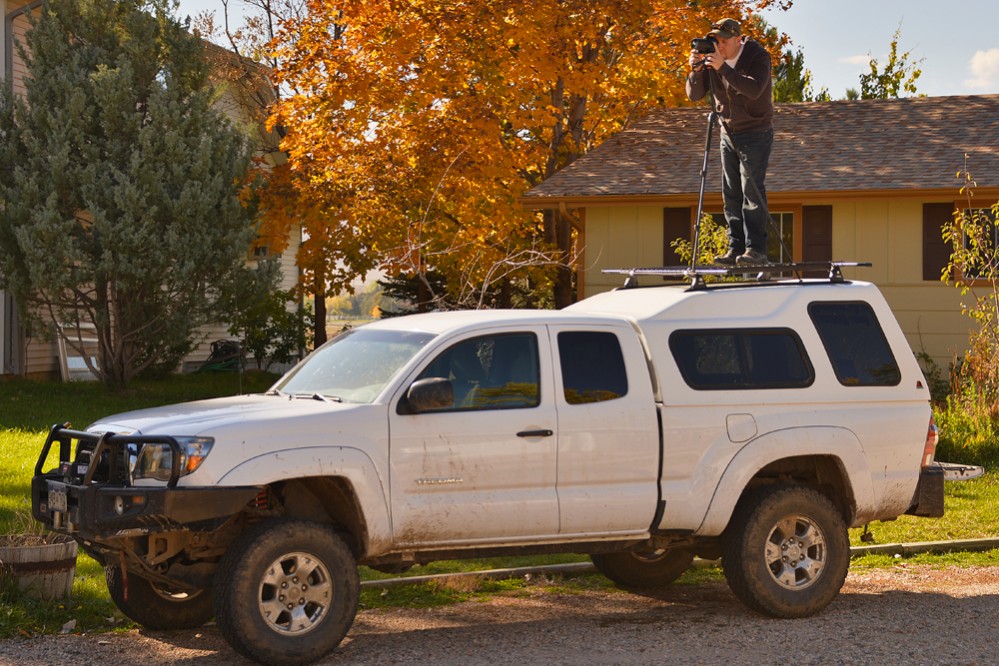
More so than other visual arts, photography is the marriage of technical and compositional skills. While it’s obvious how principals like the rule of thirds, creating depth with diagonal lines, and using a foreground element as an anchor can enhance photos, photographers must also be mindful to exclude distracting elements.
Photography is known as “the art of subtraction” because compositions should only contain enriching elements and exclude ones that add nothing or distract. Distracting elements clutter the photo and diminish the photo’s impact. Common distractions include brush in the foreground, grass and branches sticking into the frame, and partially cut-off objects. This is an important principle to point out because it’s a commonly overlooked detail. A few errant sticks protruding into the bottom frame doesn’t seem like a big deal, but taking a quick moment to eliminate them can differentiate between mediocre and great photos.
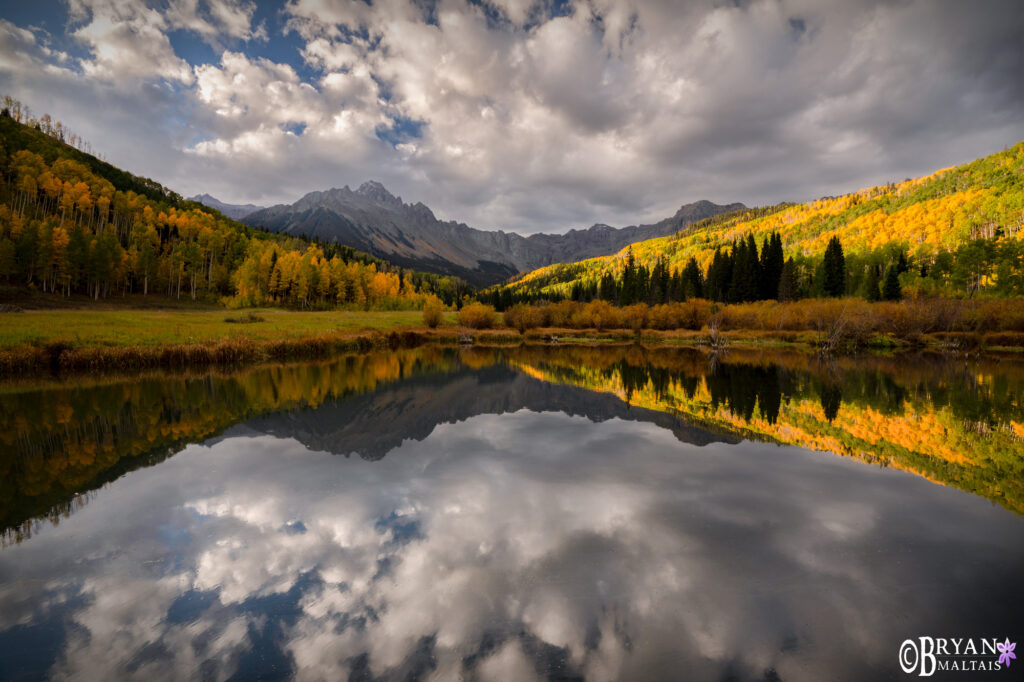 Mt. Sneffels Reflection, San Juan Mountains, Colorado. This is a “clean” image, but to get free of pond-side brush I’m standing on a beaver dam with my tripod legs in the water. I’ve pulled back willow branches that would otherwise be sticking into the frame and sticks are poking me in the side of the head and back as I take the photo.
Mt. Sneffels Reflection, San Juan Mountains, Colorado. This is a “clean” image, but to get free of pond-side brush I’m standing on a beaver dam with my tripod legs in the water. I’ve pulled back willow branches that would otherwise be sticking into the frame and sticks are poking me in the side of the head and back as I take the photo.
To eliminate extraneous objects, you can either frame them out of the composition or physically remove them, provided this doesn’t harm the environment. I devote significant effort to eliminating clutter in my photos. I built a rooftop photography platform for my truck to shoot above roadside foliage. I’ve waded into lakes and set my tripod up in the water to get clear of shore-side brush. I snip away grass in macro compositions with my multi-tool scissors. When shooting wildlife I try to position a clear background behind the animal for distraction-free bokeh. When modifying the scene, I make sure not to uproot, dislodge or disturb anything that could damage the environment or the home of a creature.
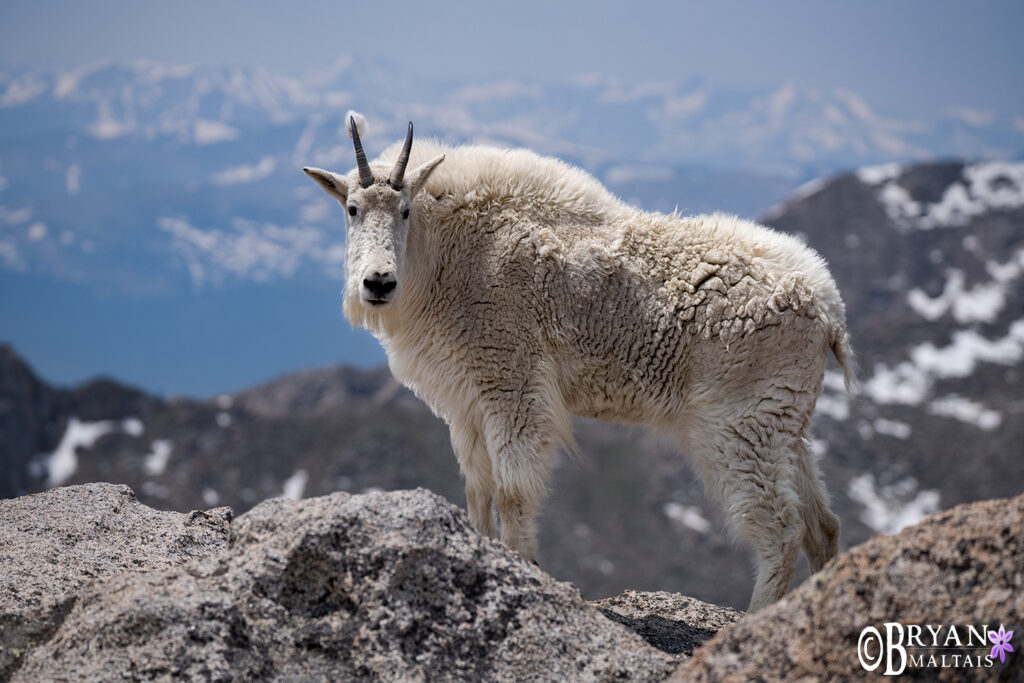 I worked with this Mountain Goat billy for a while to move into a position that placed distant mountains in the background. For most of the time there was a wall of distracting rocks behind him that would’ve made for a cluttered shot.
I worked with this Mountain Goat billy for a while to move into a position that placed distant mountains in the background. For most of the time there was a wall of distracting rocks behind him that would’ve made for a cluttered shot.
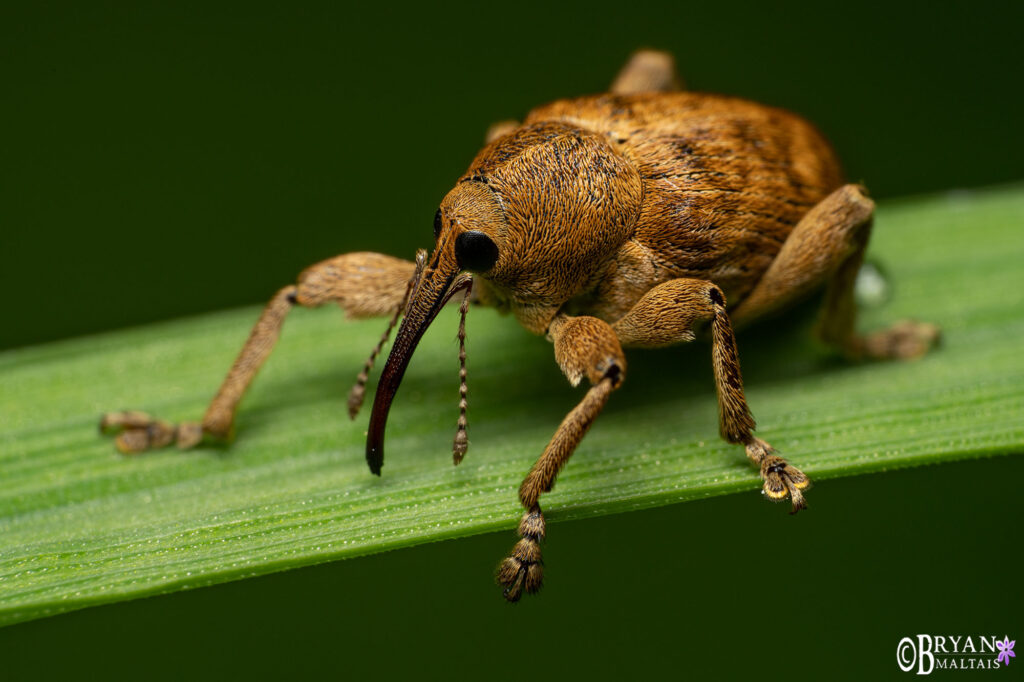 Nut Weevil, Baden-Württemberg, Germany. Striving for clean images applies to every genre, especially macro photography. There were many Weevils perched on vegetation, but this was the only individual that I found that didn’t have distracting, criss-crossing blades of grass in the background.
Nut Weevil, Baden-Württemberg, Germany. Striving for clean images applies to every genre, especially macro photography. There were many Weevils perched on vegetation, but this was the only individual that I found that didn’t have distracting, criss-crossing blades of grass in the background.
Beyond removing small pieces of clutter, you should also exclude large elements from the grand landscape that add nothing to the composition. The goal is to create the simplest, cleanest image possible. This can be challenging when shooting wide-angle landscapes that tend to be filled with beauty in every direction. If a scene contains a patchwork of spectacular phenomena worthy of being included, by all means zoom out and capture the full grandeur. However, also experiment with zooming in just a bit to see if the tighter perspective is less busy, or move to a different vantage point that may simplify the composition. The extreme end of striving for simple compositions is its own genre, the “intimate” landscape, which I’ll cover in a future post.
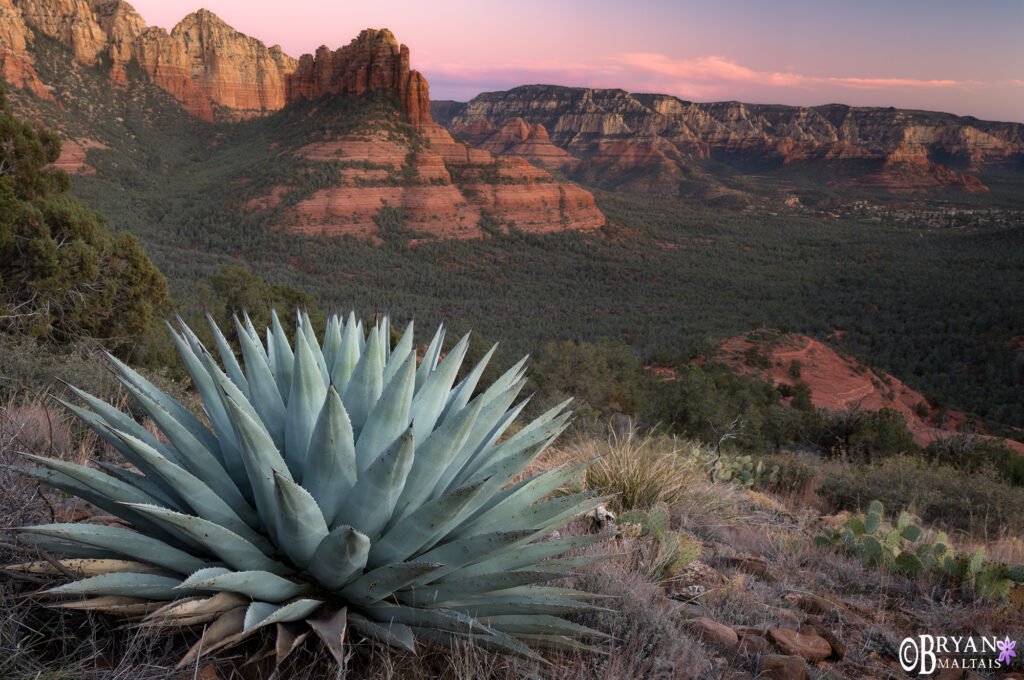 I shot this agave in Sedona, AZ in winter when the hills were still covered in dead, yellow grass from the previous year. The base of the agave was shrouded in brittle grass blades before I spent about 15 minutes snipping each one away to get a clear shot.
I shot this agave in Sedona, AZ in winter when the hills were still covered in dead, yellow grass from the previous year. The base of the agave was shrouded in brittle grass blades before I spent about 15 minutes snipping each one away to get a clear shot.
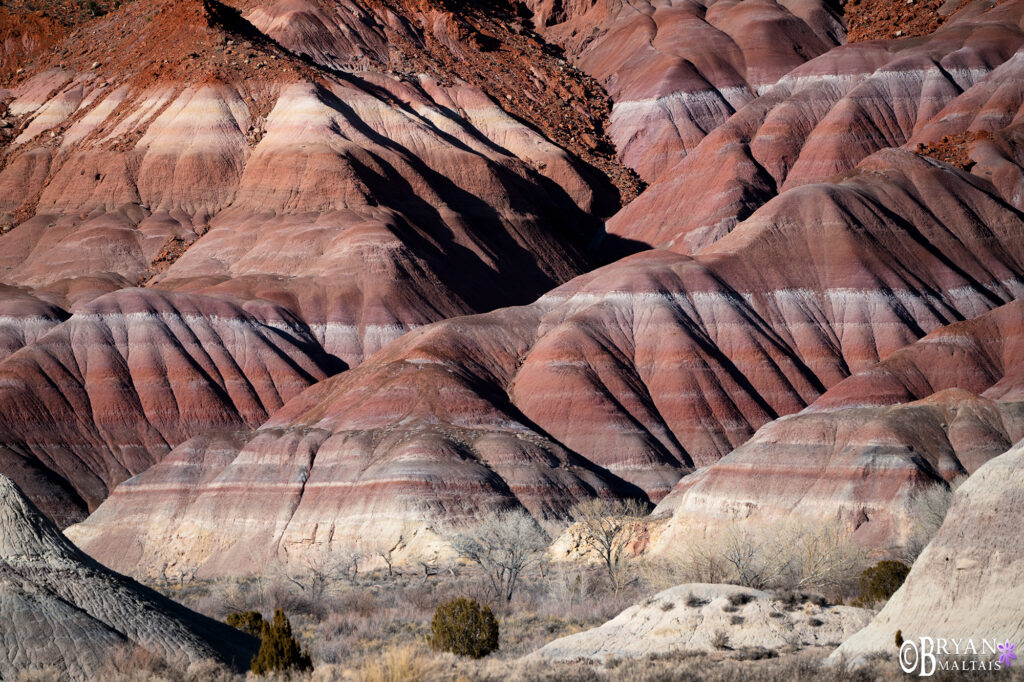 The rainbow hills of Old Paria Canyon, UT. Zooming out would have shown the expanse of amazing striated hills, but I decided to shoot a tight crop for a more impactful intimate landscape.
The rainbow hills of Old Paria Canyon, UT. Zooming out would have shown the expanse of amazing striated hills, but I decided to shoot a tight crop for a more impactful intimate landscape.
